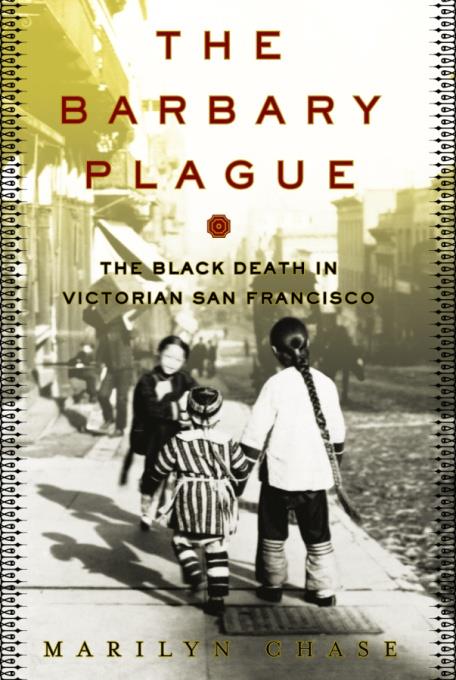
The Barbary Plague
The Black Death in Victorian San Francisco
مرگ سیاه در سانفرانسیسکو ویکتوریایی
کتاب های مرتبط
- اطلاعات
- نقد و بررسی
- دیدگاه کاربران
نقد و بررسی

December 16, 2002
In 1900, a ship called the Australia
docked in San Francisco, carrying infected rats that launched a plague epidemic in the city, which raged sporadically for five years before it was subdued. Chase, a reporter for the Wall Street Journal, argues in this engaging narrative that social, cultural and psychological issues prevented public health officials from curtailing the outbreak. Relying on published sources, diaries and letters, Chase shows how the disease first hit Chinatown and explains that most San Franciscans denied the outbreak, while others blamed the city's Chinese population (city officials hid behind worries about tourism and the city's reputation). But Chase goes beyond sociological analysis in this lively work and focuses on the players. While the first public health official assigned to stem the epidemic, Joseph Kinyoun, was an innovative scientist, Chase shows how he lacked the strategy and tact necessary for the task—his plan to quarantine Chinatown caused as many problems as it solved. Only when Rupert Blue, a new official, was assigned to the case after a second outbreak five years later, was the epidemic quashed. Avoiding pedantry and tediousness, Chase tells a story that highlights the true nature of epidemics—and how employing a combination of acceptance, perseverance and diplomacy are key to solving them. As she notes in her final pages, the parallels with the AIDS crisis are striking, and the lessons worth salting away for any future epidemics.

November 1, 2002
Chase has been reporting on current issues in medicine and science for the Wall Street Journal since 1978, but here she treads backward to uncover events surrounding the bubonic plague that swept early 1900s San Francisco.

September 1, 2003
Adult/High School-Chase's knowledge of the city and skill for making scientific concepts accessible to educated lay readers make this snapshot of a relatively unknown event vivid and thought provoking. Bubonic plague entered the port of San Francisco with the 20th century. For the next decade, it defied both medical and political efforts to eradicate it from an urban landscape fraught with ethnic distrust, new money, and old customs. The author offers a clear and telling portrait of the roles played by Chinese merchant societies, the white press, and Sacramento officials that initially enabled the disease to gain a foothold. She then turns most of her attention to detailing the scientific and personal strengths and weaknesses of the national public health officials who worked to determine efficient ways to diagnose, treat, and eventually halt the spread of the disease. In addition to finding readers among students already interested in modern medicine, Chase's book is a fine selection for ethnic studies and political science classes. Although the few photos do little to expand the narrative, the thumbnail descriptions of the disparate lives altered, ended, or detoured by San Francisco's experience with rats, fleas, and disease provide concrete images for readers with any imagination.-Francisca Goldsmith, Berkeley Public Library, CA
Copyright 2003 School Library Journal, LLC Used with permission.

March 1, 2003
From 1900 to 1909, San Francisco was in the grip of bubonic plague, a dreaded epidemic spread by infected rats that jumped ship and found their way into the sewer system and into Chinatown. The gold rush boomtown also found itself paralyzed by a nine-year conflict between public health, business, and political interests, and the civil rights of the Chinese, who were readily targeted as scapegoats. Men in powerful positions alternately denied the plague-- and its attendant fears of quarantine and embargo--and used it as an excuse to stir up racial hatred against the Chinese. Chase, medicine and science reporter with the" Wall Street Journal," chronicles this gripping medical saga primarily through the work of two career health officers, Joseph Kinyoun, a gifted bacteriologist who first confirmed the plague and placed Chinatown under strict quarantine, running roughshod over civil rights and ancient customs, and his successor, Dr. Rupert Blue, who handled things more diplomatically and was finally able to win over political and economic interests in acknowledging the plague and beginning a cleanup. (Reprinted with permission of Booklist, copyright 2003, American Library Association.)

























دیدگاه کاربران